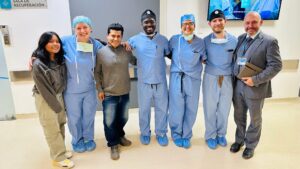Background: Various mechanisms leading to early hyperlactataemia post-cardiac surgery have been postulated. Specifically, in the paediatric population, benign early hyperlactataemia may be associated with crystalloid priming in the cardiopulmonary bypass circuit. The aim of this study was to review paediatric patients who had crystalloid prime and assess their outcomes.
Methods: A retrospective review of paediatric patients who underwent cardiac surgery with crystalloid prime at our institution between November 2014 and May 2018 was performed. Data were collected from medical and laboratory records.
Results: Among 569 patients, 237 (42%) received a crystalloid prime; 51 (22%) were excluded due to intraoperative hyperlactataemia. Of the remaining 186 patients, 98 (53%) developed hyperlactataemia postoperatively. Patients with hyperlactataemia had longer cardiopulmonary bypass and aortic cross-clamp times but similar Aristotle complexity scores. Patients with postoperative hyperlactataemia had higher peak VIS [median 8 (IQR 0-8) vs. 5 (IQR 0-8)] within the first 24 h (p = 0.002). However, there was no difference in the duration of ventilation between the two groups (p = 0.14). Yet only 58% of patients with hyperlactataemia were discharged from the ICU within 24 h, compared to 78% without hyperlactataemia.
Conclusions: In this study population, transient postoperative hyperlactataemia in paediatric patients with crystalloid prime may not necessarily indicate tissue hypoxaemia. Despite a similar duration of ventilation in patients with and without hyperlactataemia, patients with hyperlactataemia had a longer duration of inotropes and ICU stay. Consideration should be given to discontinuing inotropes in patients with crystalloid prime and postoperative early hyperlactataemia once they are extubated.
Keywords: ICU stay; crystalloid prime; inotropic support; paediatric cardiac surgery; postoperative hyperlactataemia.







